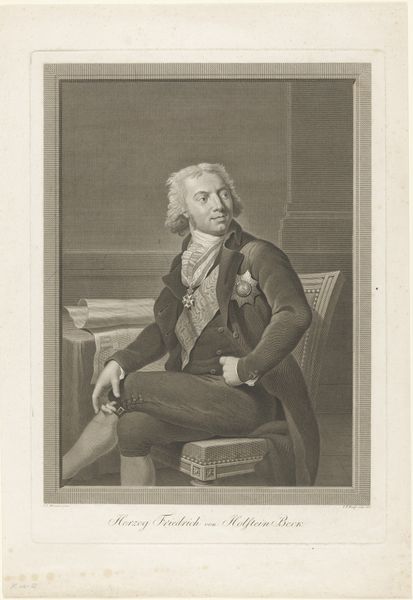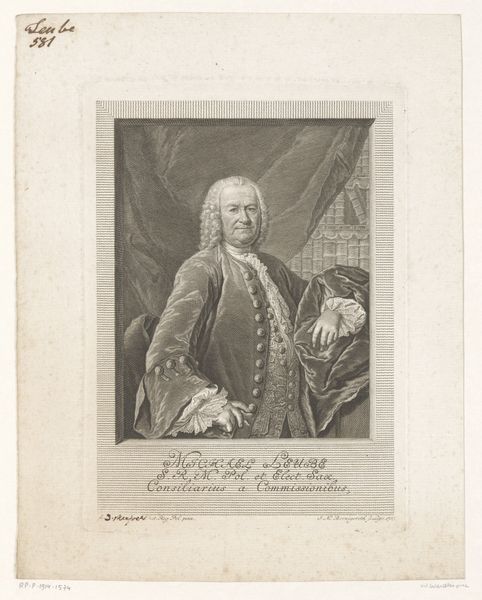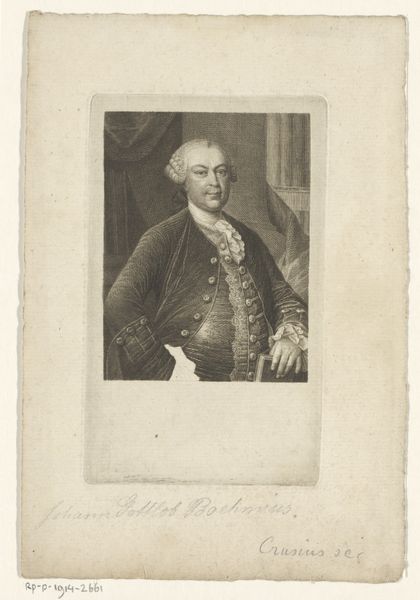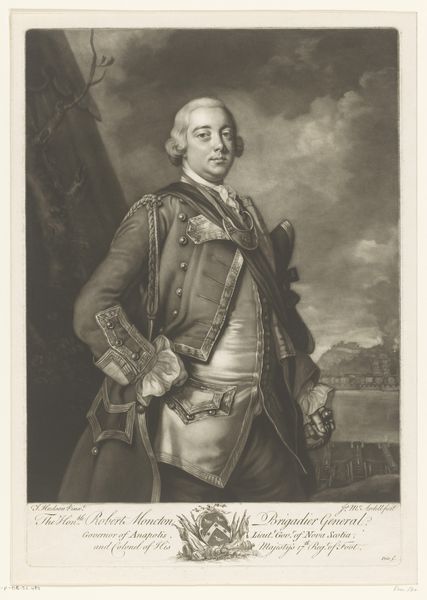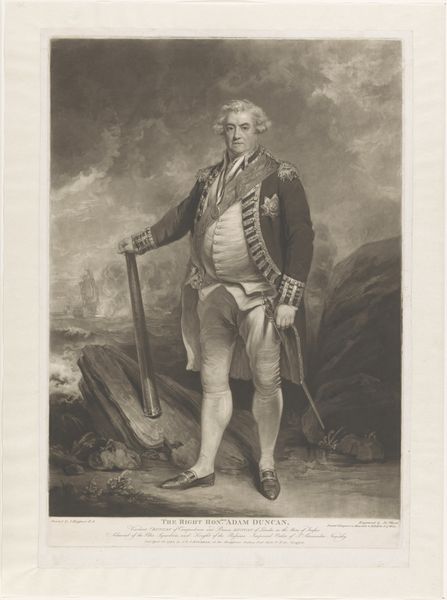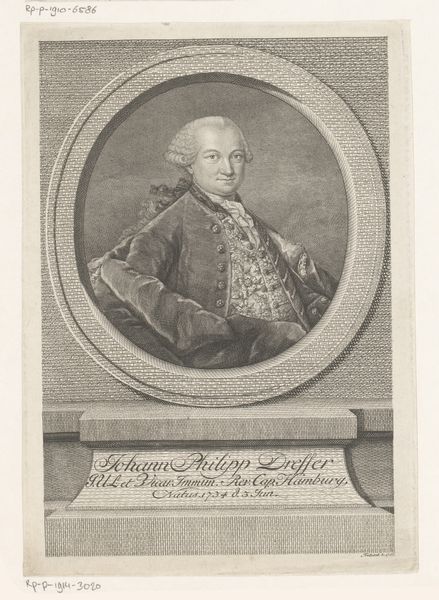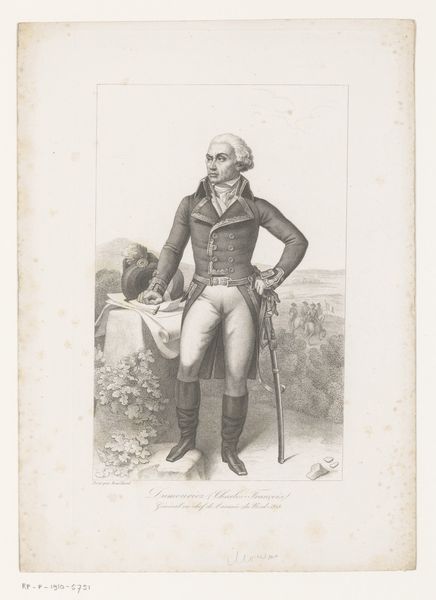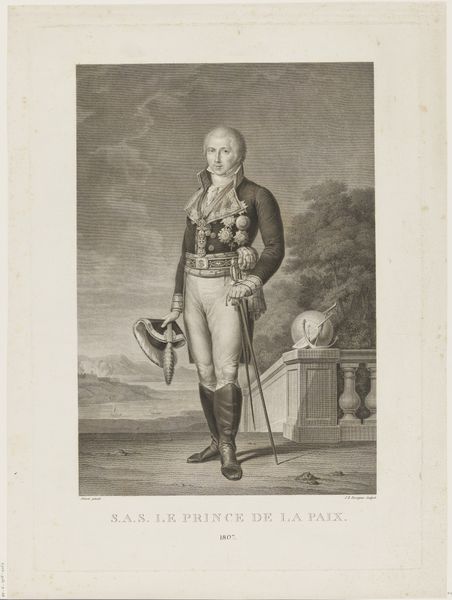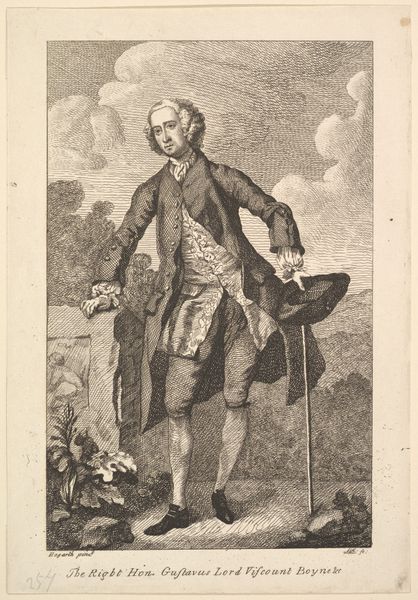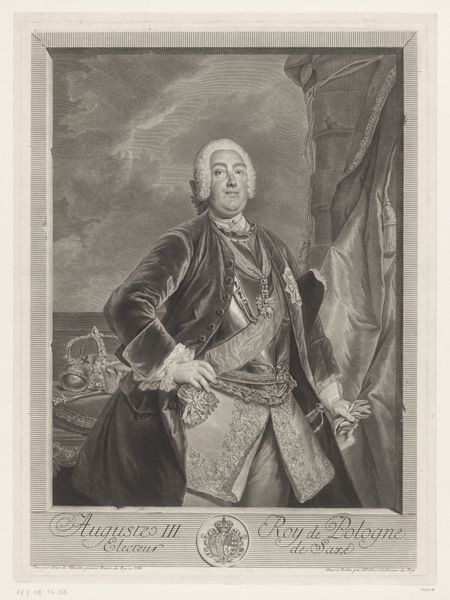
print, engraving
#
portrait
#
neoclacissism
# print
#
history-painting
#
engraving
Dimensions: 511 mm (height) x 288 mm (width) (bladmaal)
Curator: This is an engraving made in 1796 by Gerhard Ludvig Lahde, titled "Frederik Christian, Hertug af Slesvig," which translates to "Frederick Christian, Duke of Schleswig." It's part of the collection here at the SMK, Statens Museum for Kunst. Editor: My first thought is this embodies a cool detachment. It's classically composed, yes, but almost stark in its representation. I find it difficult to emotionally connect. Curator: Neoclassical art, particularly portraiture, often presents a subject through the lens of idealization and restraint. Lahde aimed to show Frederick Christian embodying the virtues and characteristics associated with his rank and role. Consider the crispness of line. Editor: Precisely. This piece underscores how powerful interests embed themselves in the art of the period. Even his garments serve a function—communicating class, power, belonging. Everything in this portrait reinforces status. Curator: Absolutely, the Duke's attire is a potent display of social position. The decorations are designed to emphasize heritage, influence, and alliance through visual means. Note his hand casually placed within his waistcoat, connoting inner resolve, strength, a cultivated elegance. Editor: Which contributes to the almost austere feel. It reflects a world shifting towards rationality and away from overt displays of emotion, where self-representation became a tool to craft one's persona for public consumption. It's political communication formalized. Curator: True, yet consider the symbolism. The landscapes and architectural elements subtly amplify his governance of the territories over which he held dominion, with connotations of duty and stewardship. It's like he’s not merely presented, he's enshrined. Editor: And art becomes a reflection and constructor of social order. By studying who gets depicted, and how, and through what mediums, we unlock broader understandings about historical power dynamics and evolving norms of display. Curator: Analyzing it helps reveal so much about cultural and political systems! It truly resonates still. Editor: Yes, precisely. Artworks are living history. Thanks for unpacking this Lahde piece with me; it's clarified my perceptions!
Comments
No comments
Be the first to comment and join the conversation on the ultimate creative platform.
